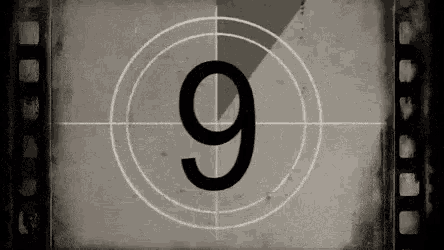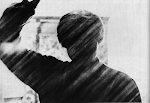 By Steve Evans
By Steve EvansBefore computer-generated imagery turned most modern movies into digital cartoons, film craftsmen were forced to come up with clever special effects solutions using old-fashioned (but arguably more convincing) methods than what we see onscreen today.
In 1972, when you wanted to show a ketchup-spattered Mafioso at a toll booth, you hired a make-up guy named Dick Smith, who also engineered all the mayhem on display at the climax of Taxi Driver and eventually won an Oscar for turning F. Murray Abraham into an ancient Salieri in Amadeus.
For The Godfather, Smith designed little blister packs filled with fake blood, glued them to an actor with attached monofilaments (fishing line), then obscured the whole setup with pancake makeup. Check out that rare still from the Godfather's toll booth shooting location, above right, as Jimmy Caan waits for his big death scene.
Caan was instructed to stand still between takes and not rupture his rigging, otherwise the laborious process of applying bullet wounds would have to start over from the beginning. Reportedly, each setup took hours. If a shot was unsatisfactory, the wardrobe department would have to dress Caan in a clean suit and get the actor back into position. Note his left arm extended through the broken window of the car door in the image above, then compare it to the finished film. Continuity is an important cinematic element, so if the character is hanging onto the car door as he's eviscerated by machine-gun fire, his arm needs to be in the same position for retakes.
When Director Francis Ford Coppola called action, Caan began thrashing about and the crew yanked the fishing lines, which were artfully concealed by camera placement and lighting. As the blisters tore open, rivulets of fake blood poured out and Caan cried “ouch!” in Italian. Similar setups were used for the scene where Michael Corleone (Al Pacino) guns down Sollozzo and Capt. McCluskey with headshots from a .38 snub in that cozy Italian restaurant in the Bronx.
Now back to the toll booth. For body shots, the Godfather crew rigged small explosive charges known as squibs beneath Caan’s double-breasted pinstripes. The traditional method called for condoms filled with stage blood to be placed over the charges, which were wired down the leg of his pants to a control panel out of sight. On cue, Caan would do his little dance of death while a crewman raked the contact wire across a series of terminals, setting off the sequence of small charges concealed under the actor’s suit. Voila! Sonny Corleone meets a gruesome end from a dozen Tommy guns.
Rapid-fire editing and some seriously convincing sound effects complete the illusion:
The dedicated do-it-yourself filmmaker can achieve approximate results today with a basic laptop, digital camcorder and off-the-shelf software, but it won’t look nearly as good as Smith’s 40-year-old effects. And you won’t get James Caan to dance for you, either.
Cinema Uprising copyright © 2013 by Steve Evans. All rights reserved.






